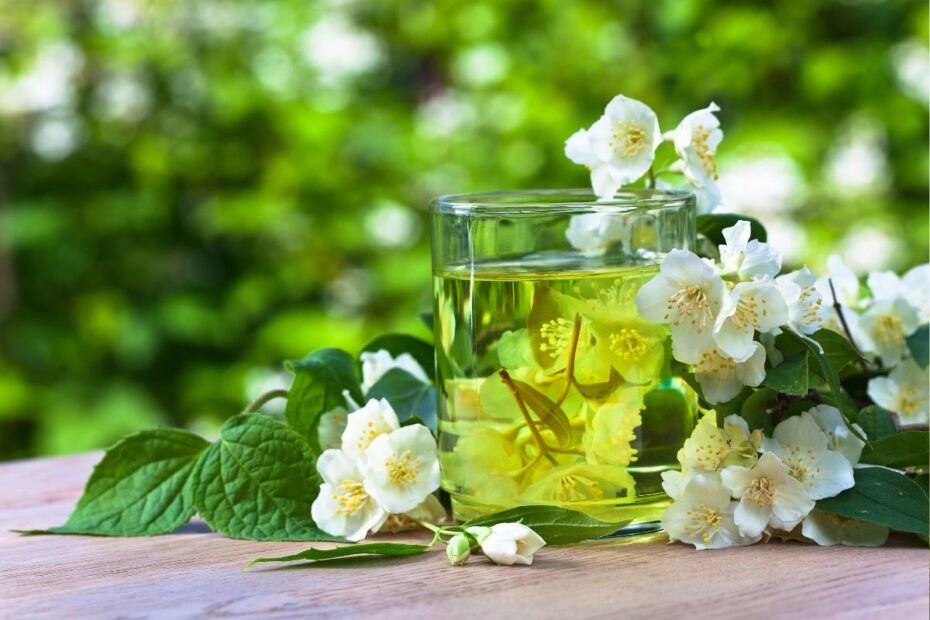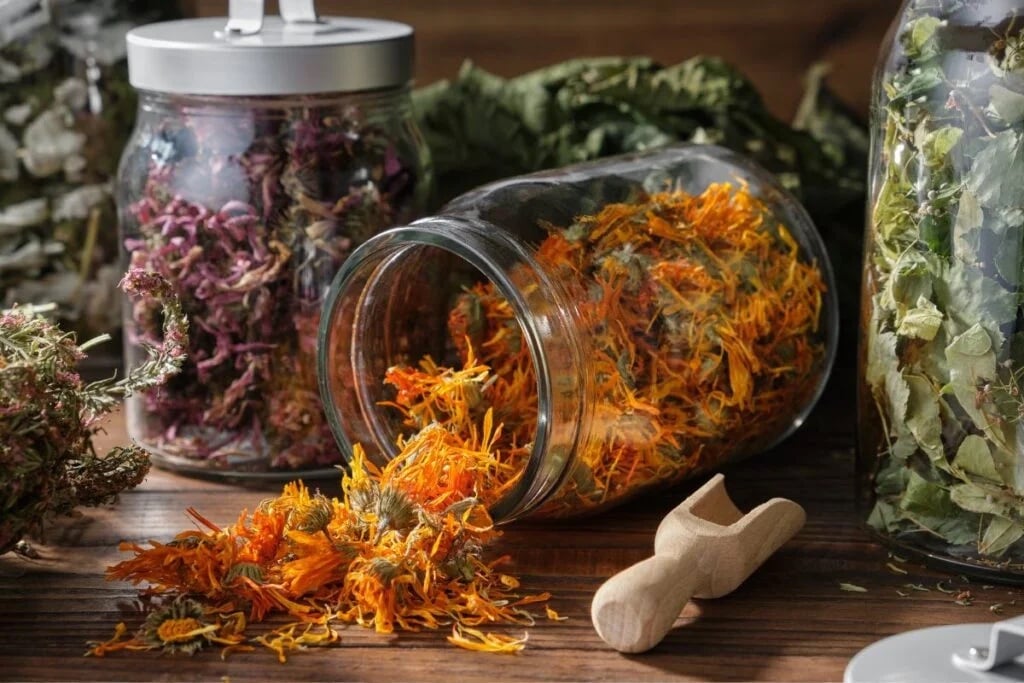Jasmine has been used to perfume tea since the 5th century in China. However, it was not until the Qing Dynasty (1644–1922) that this aromatic tea became widespread and exported to the West. Nowadays, jasmine tea is the most popular aromatic tea in China. The Fujian region produces the best and most traditional tea. Jasmine tea is popular and well-liked both in China and in many countries around the world.
Jasmine flowers with healing powers give the jasmine tea benefits for health. This tea is more of a folk medicine product.
Jasmine tea may mean two things: an aromatic type of tea or a beverage with jasmine flowers.
More commonly, it refers to a tea that smells of jasmine flowers. Thus, a more accurate description of this tea would be “tea with jasmine.”
How to Brew Jasmine Tea?
People commonly use two types of jasmine flowers to flavor tea: common jasmine (Jasminum officinale) and Arabian jasmine (Jasminum sambac).
Pich the jasmine flowers in the early morning before the petals have opened to flavor the highest-quality teas (usually green). Keep the flowers in a cool room until they open at midnight and give off their most intense aroma. There are two main ways of breathing tea:
- Layering: place the tea leaves and jasmine flowers alternately in layers.
- Blending: combine the tea leaves with the jasmine blossoms, and keep overnight.
More than four hours must pass for the tea to absorb the scent and taste of the jasmine flowers. Repeat the inhalation process as many as six or seven times. This is how long it takes to produce a premium-quality aromatic tea. The tea leaves from fresh jasmine flowers also absorb moisture, so you need to dry the tea again to prevent deterioration.
Nowadays, the tea industry also uses ‘quick’ ways of flavoring tea. When the tea is brewed, it is immediately perfumed with jasmine essential oil. Similar to black tea with bergamot (Earl Grey).
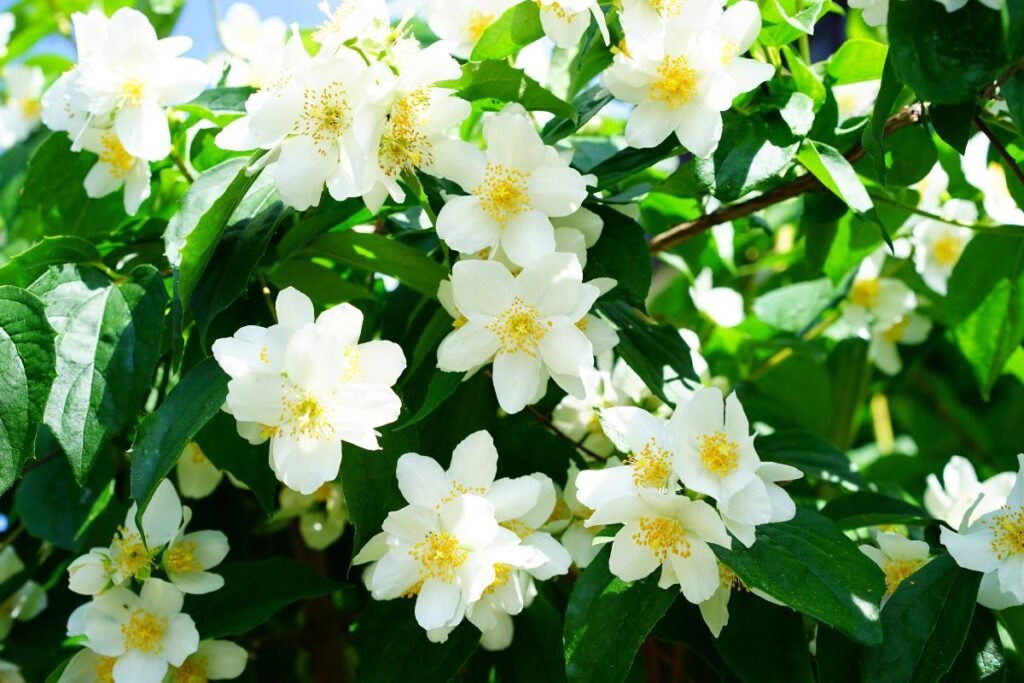
You Can Prepare Tea with Jasmine at Home!
If you have some quality green tea (or another favorite type of tea) and fresh or dried jasmine blossoms at home, you can make an aromatic tea with jasmine. This process will take at least a day until you can enjoy your aromatic homemade tea.
You will need:
- ½ cup (16 g) of green (or your favorite) raw tea,
- 1 handful of fresh (or dried) jasmine flowers. For the best results, use fresh jasmine flowers.
For this purpose, take a clean glass container with a wide opening and a lid. Place the teaspoons and the jasmine in the container in even layers. The top and bottom layers should consist of tea. When you finish layering the teas, press them down with a suitable object (weight, pebble, etc.) and cover them. The tighter the layers are pressed together, the better the tea will absorb the aroma and flavor of the jasmine.
Leave the layered tea to stand for at least a day. However, you can store them for up to 3 weeks. Once the flavoring process is complete, remove the weight from the container and store the prepared aromatic tea in an airtight container in a dark, dry place.
Aromatic tea is best consumed within 6 months of production. Aromatic black tea can stay fresh for up to a year.
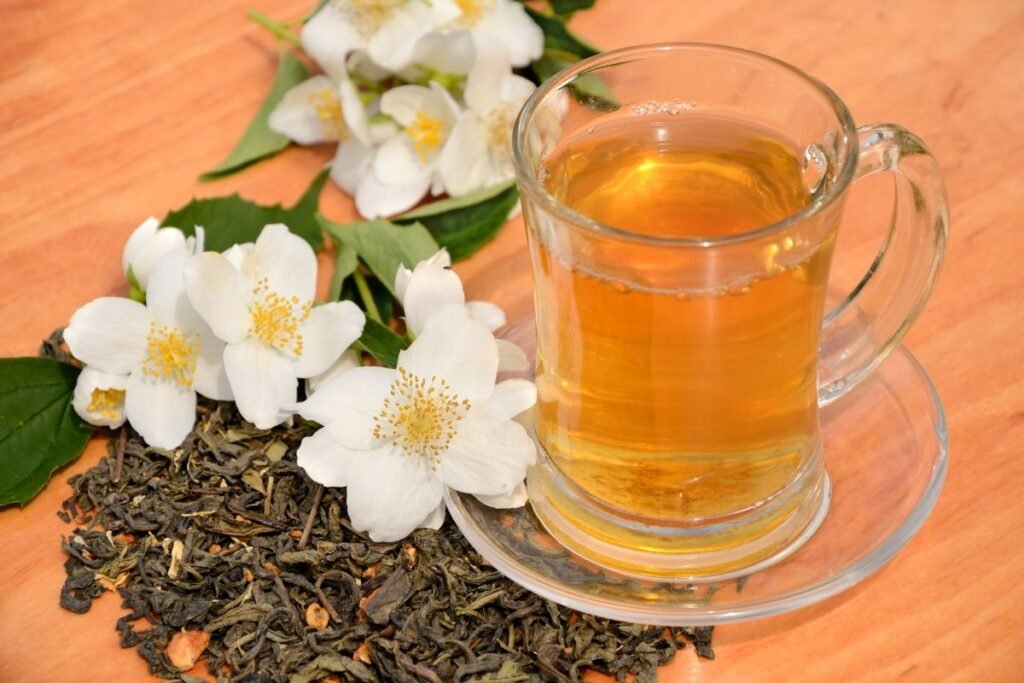
Benefits of Tea with Jasmine
As jasmine tea is usually made from green tea, it contains many of the same health benefits as green tea. It retains minerals: iron, zinc, potassium, and copper. It is also rich in highly potent compounds, such as antioxidants (polyphenol catechins), alkaloid caffeine, and the amino acid L-theanine. These components protect cells from damage caused by free radicals. They impact weight loss, blood sugar control, and cardiovascular health. Jasmine tea may also have anti-inflammatory effects. It can also help maintain alertness and improve memory.
Jasmine Flowers: for Herbal Tea
Folk medicine values jasmine, a beautifully flowering and fragrant nursery plant, for its healing properties. The jasmine flowers, leaves, and young shoots are used for herbal medicine.
If you grow jasmine in your private garden, you can make personal raw jasmine flowers for tea. The flowers are harvested in the morning before the petals have opened. Once the flowers have opened, they are not eligible as medicinal raw materials. Dry the jasmine flowers in a warm place protected from direct sunlight. After drying, store the dried flowers in an airtight container in a dry, dark place.
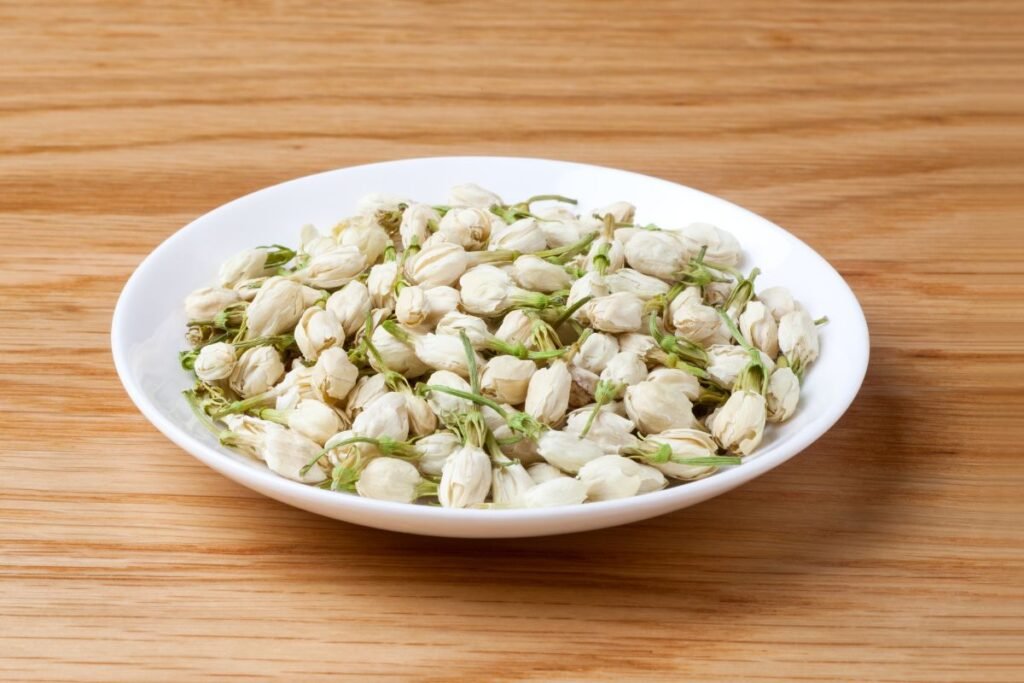
Benefits of Jasmine Blossom Tea
Infusions, decoctions, syrups, and tinctures made from fresh or dried jasmine flowers are used for medicinal purposes. Folk medicine uses jasmine flowers to treat the following diseases and ailments:
- Emotional disorders, anxiety, nervous tension, and insomnia. Jasmine is even considered to be a natural antidepressant with a relaxing, balancing effect on the nervous system.
- For respiratory diseases. Suitable for bronchitis, bronchial asthma, and severe coughs.
- For skin disorders, wounds, dermatitis, and eczema. Jasmine blossom decoction poultices provide an excellent treatment for these conditions.
For bronchitis or bronchial asthma, it is advisable to use a decoction of young jasmine shoots with leaves and flowers. Prepared it from 1 tablespoon of medicinal raw material and a glass of water. Pour boiling water over the raw material and simmer for about 5 minutes. Leave to stand for 1 hour, strain, and drink 3 times a day, 1 or 2 tablespoons before meals.
For severe coughs, prepare a syrup of jasmine flowers. Make it using about half a glass of jasmine flowers (fresh or dried) poured over a glass of boiling water and boiled for about 4 minutes. Add a teaspoon of good-quality sugar to the decoction (after squeezing the blossoms well) and cook until dissolved. It is recommended to take 1 teaspoon of the syrup per day.
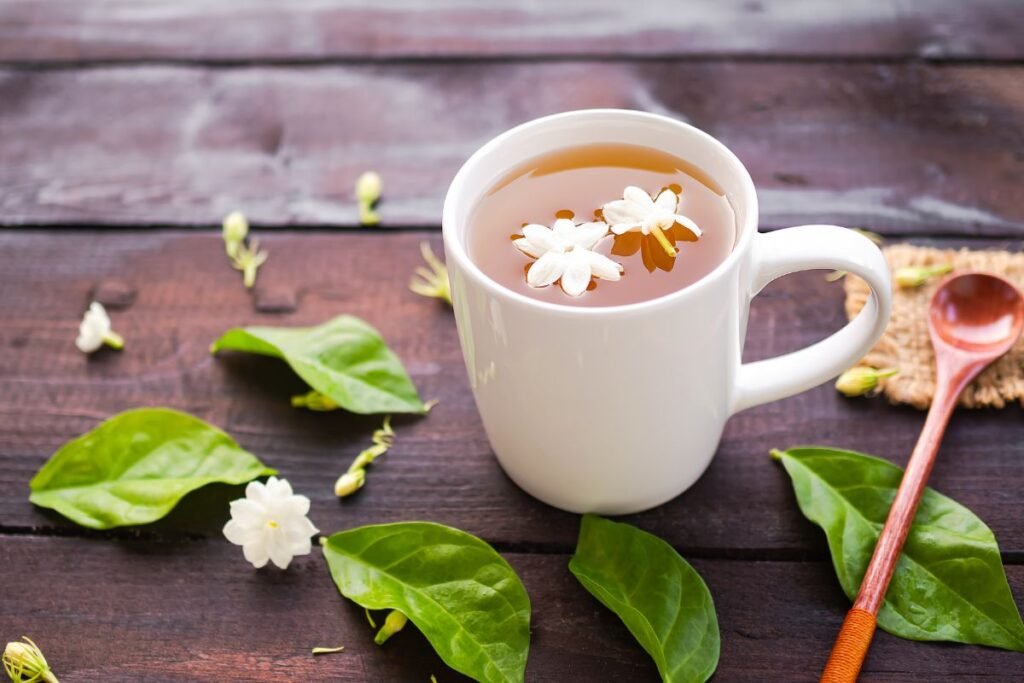
Recommendations for a Good Cup of Aromatic Jasmine Tea
- It is best to use loose, aromatic jasmine tea rather than tea bags.
- Traditionally, a good-quality aromatic jasmine tea has a green tea base, which is quite refreshing.
- Together with the jasmine aroma and flavor notes, this tea is very delicate. Therefore, various additives are not recommended, as they will overpower the original taste of the tea.
- Quality aromatic jasmine tea can be infused several times, but each subsequent spitting will reduce the jasmine flavor and aroma.
- Splash aromatic jasmine tea in a cup or infuser with water at 70–80 °C. Boiling water will spoil the subtlety of the flavor of the tea.
- Let the tea steep for 3–5 minutes.
- Strain and enjoy before drinking.
Iced Jasmine Tea with Milk
Summer holidays can be even tastier! Treat yourself or your loved ones to iced jasmine tea with milk. The number of servings you plan to make will depend on the quantity of products you need. To calculate, use 1 teaspoon of raw tea material, 2 parts water, 1 part milk (or equal parts of milk and water) for 1 glass of tea, and a sweetener to taste.
For the tea, you will need:
- Aromatic jasmine tea, preferably loose, not bagged,
- Water,
- Milk (cow’s milk or vegetable milk such as macadamia nut or oat milk),
- 1 tbsp of dried jasmine flowers,
- Honey (or other sweetener) to taste.
Place the teaspoons in a heat-proof teapot and pour boiled and cooled 80 °C water over them. Cover the container and leave it to steep for 2–3 minutes. Add the honey (or other sweetener of your choice) and stir well to dissolve the sweetener. Pour the milk into the tea and stir again. Add the jasmine flowers to the prepared tea, mix, cover, and refrigerate, preferably overnight. Before serving, remove the jasmine blossoms from the container. Add ice cubes to the glasses and pour the prepared tea over them.
Jasmine Flowers Enrich the Taste of Food
Jasmine flowers are not only used to flavor tea or cure diseases. They can also add color to everyday dishes and desserts. Dried jasmine flowers are used in culinary applications (salads, soups, etc.) and confectionery (baked goods, ice cream, etc.).
You can use aromatic jasmine tea to make delicious desserts suitable for any occasion.
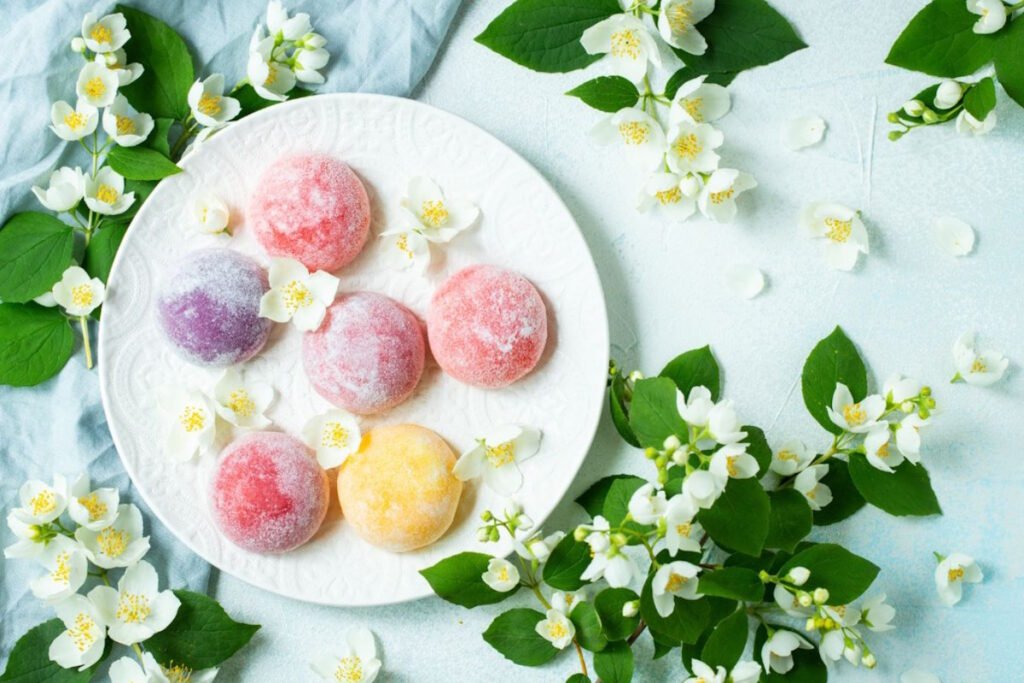
Jasmine Tea Sorbet
For 1 liter of sorbet, you will need:
- 1.5 cups of sugar,
- 3 cups of water,
- 2 lemon peel,
- 3 tablespoons of aromatic jasmine tea (preferably green),
- 1 cup freshly squeezed lemon juice (4-5 lemons).
Combine the sugar, water, and lemon zest in a medium-sized saucepan. Stir over low heat until the sugar dissolves. Bring to the boil and cook for 3 minutes. Remove from the heat and add the teaspoons. Cover the pot and leave for 4 minutes. Strain the prepared mixture into a large bowl. Stir in the lemon juice. Place the bowl in the fridge for about an hour to allow the sorbet to cool well. Refrigerate the dessert once it has cooled. Give the finished product in different shapes, depending on your preference or serving dish.
- Ice cream on a stick: if you have special molds, put the sorbet in them and freeze.
- Sherbet in jars: freeze the dessert in serving jars.
- Sicilian granita: place the sorbet in shallower plastic containers and freeze for 4 hours, stirring with a fork every 30 minutes, to form ice crystals of uniform texture. This dessert will have a pleasant, icy crunch when eaten.
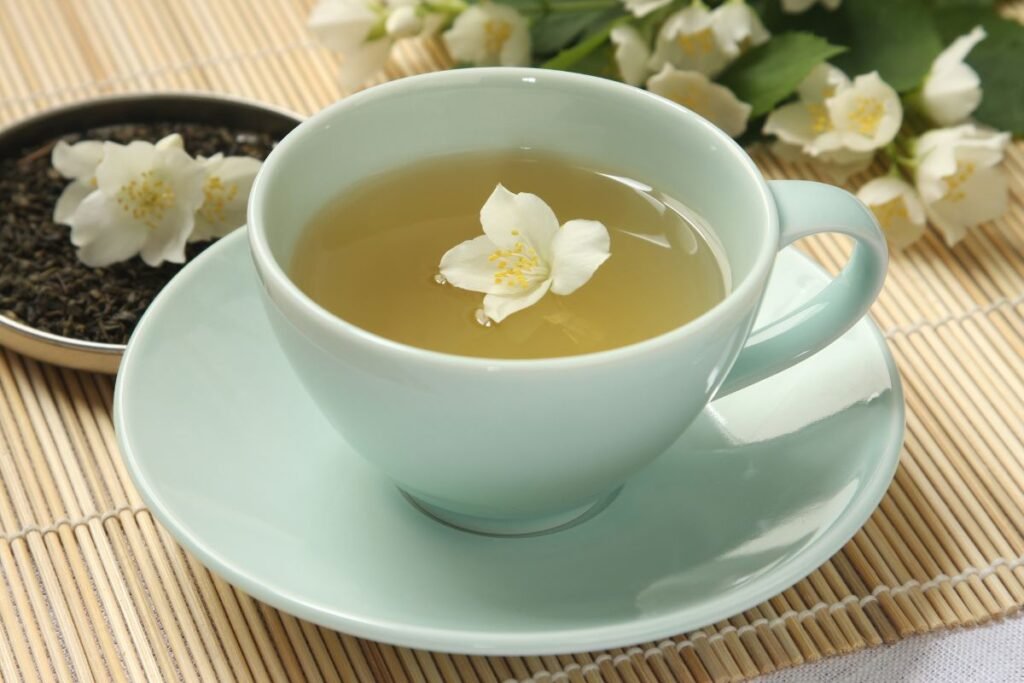
Jasmine Blossoms for Fragrance and Beauty
Essential oil of jasmine is an economically important component in the perfumery industry. Jasmine is also one of the favorite home fragrances for stented stics and incense.
Flowers, or their essential oil of jasmine have skin-friendly properties. That is why these components are used in the cosmetics industry.
Tea with jasmine is also beneficial for the beauty of the skin. Its chemical compounds have antiseptic and anti-inflammatory properties, and jasmine can help improve blood circulation. The jasmine tea benefits for skin beauty include the following:
- Moisturizes and helps to maintain elasticity.
- Soothes irritated sensitive skin.
- Helps smooth wrinkles.
- Brightens even skin tone.
Jasmine Tea as a Facial Tonic
Required tools and ingredients:
- 1 tbsp. jasmine green tea,
- 1 cup of filtered water,
- Cotton cloth.
Place the tea leaves in a heatproof container, cover with boiling water, and simmer for 5 minutes. Let the decoction cool to room temperature. Before using the toner, wash and dry your face cleanly. Moisten a cotton cloth with the toner and cleanse your face. You can also apply the toner all over your body after a shower or bath. You do not need to rinse it; just leave it to dry naturally.

Possible Side Effects of Jasmine Tea
There are no known side effects of jasmine. However, jasmine tea made with green tea or any other type of tea (e.g., black tea) contains caffeine. The amount of caffeine in the tea depends on the tea base. Green or white tea contains less caffeine, while black or ulongo tea contains more caffeine. So, if you are monitoring your caffeine intake, check the ingredients before consuming aromatic jasmine tea.
Excessive caffeine intake can cause headaches, dizziness, anxiety, heart palpitations, and insomnia.
Pregnant and breastfeeding women should limit or avoid caffeine.
The tea catechins can sometimes interfere with the body’s ability to absorb iron from food. However, this is more relevant for people at risk of iron deficiency with anemia. In this condition, it is better to drink jasmine tea between meals, at least one hour after eating.
Sources:
https://www.healthline.com/nutrition/jasmine-tea-benefits
https://www.teatulia.com/tea-varieties/what-is-jasmine-tea.htm
Associative photos from © Canva.
